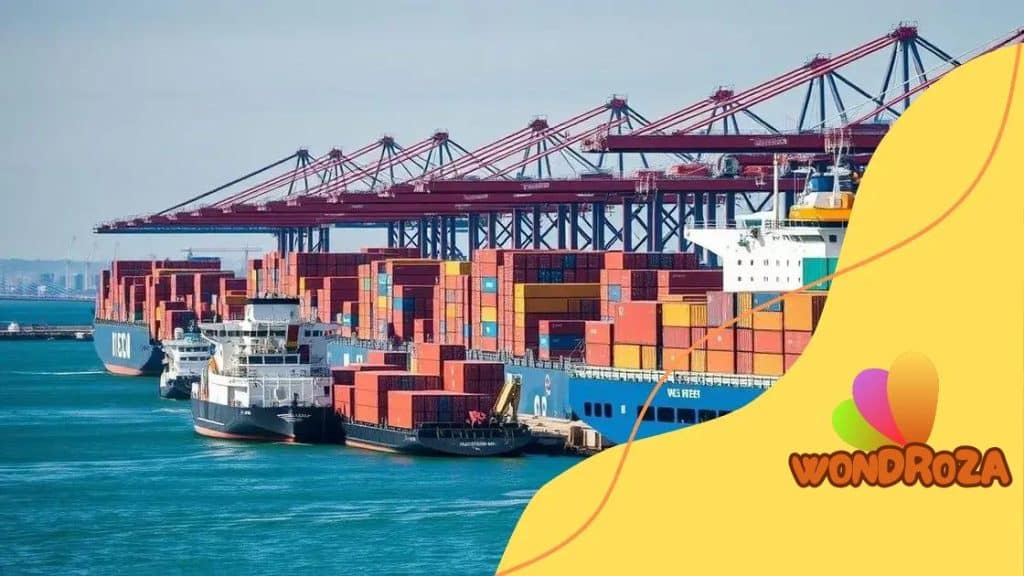How global trade is being reshaped by new tariffs

How global trade is being reshaped by new tariffs involves countries adapting their strategies, utilizing technology, enhancing sustainability, and forming regional agreements to navigate changing economic landscapes.
How global trade is being reshaped by new tariffs is a topic that’s sparking debates worldwide. With shifting policies and economic strategies, have you considered how these changes might influence your daily life?
Understanding the impact of new tariffs
Understanding the impact of new tariffs is essential in today’s global economy. Tariffs are taxes imposed on imported goods, affecting both prices and trade relationships. They can lead to higher prices for consumers and disrupt established trading patterns.
As countries implement new tariffs, the effect can be significant. The U.S. and China have seen major shifts in their trade dynamics. For example, the introduction of tariffs can create a ripple effect in various industries.
Key impacts of tariffs
New tariffs can influence various aspects of international trade. Here are some important areas affected:
- Consumer Prices: Higher tariffs can lead to increased prices for imported products, making them less affordable.
- Domestic Industries: Tariffs can provide protection for local businesses by making foreign goods more expensive.
- Trade Relationships: Imposing tariffs can strain relationships between countries, potentially leading to trade disputes.
In addition, businesses are often forced to adapt to these changes. Companies may seek new suppliers or reconsider their pricing strategies. The impact isn’t just immediate; it can shape future trading agreements and alliances.
Overall, understanding how new tariffs affect various economic factors is crucial for businesses and consumers alike. As we witness ongoing changes, staying informed can help navigate the complexities of global trade.
Key countries affected by tariff changes
Many key countries are affected by tariff changes, and understanding their roles helps us see the bigger picture. Tariffs impact not only the nations imposing them but also their trading partners.
Countries such as the United States, China, and European Union member states often lead the charge in tariff discussions. These nations have large economies that significantly influence global trade.
United States
The U.S. has implemented various tariffs in recent years, aiming to protect domestic industries. For example, tariffs on steel and aluminum imports have led to higher prices for manufacturers.
China
As another major player, China faces substantial tariff impacts from the U.S. trade policies. This has affected goods such as electronics and textiles, leading to changes in supply chains.
European Union
The European Union also navigates changes in tariffs, adjusting its trade policies to maintain economic stability. With numerous member countries involved, their collective decisions can significantly alter trade dynamics.
Other nations, including Canada and Mexico, frequently respond to U.S. tariff actions due to their close trading relationships. Changes in one country often lead to reactions in others as they seek to protect their economies.
Overall, understanding the various actors involved in tariff changes is crucial for grasping the complexities of global trade. Each country’s response can shape international relationships and economic strategies, reflecting how interconnected our world has become.
How businesses are adapting to new regulations

How businesses are adapting to new regulations is a critical aspect of today’s economy. With the rise of tariffs and trade rules, companies are finding creative solutions to remain competitive.
Many businesses are implementing new strategies to comply with changing regulations. This can include reevaluating supply chains, seeking local suppliers, and adjusting pricing structures. By adapting quickly, businesses can shield themselves from negative impacts.
Shifting Supply Chains
Many companies are reconsidering their supply chains due to tariffs. For instance, a company that used to import goods from overseas may now look for domestic suppliers. This not only reduces costs related to tariffs but also supports local economies.
Innovating Products and Services
In addition, some businesses are innovating their products to avoid tariffs. By altering the composition of their goods, companies can change their tariff classifications. This can lead to lower costs and greater market flexibility.
Emphasizing Customer Relationships
Customer loyalty plays an important role during times of change. Companies must communicate openly with their customers about pricing changes. Maintaining strong relationships can help businesses navigate challenges effectively.
As regulations continue to evolve, embracing technology also remains crucial. Companies are using software to analyze data and predict future trends. This helps businesses make informed decisions and stay one step ahead of their competitors.
Overall, adapting to new regulations requires agility and foresight. Businesses that can embrace change are more likely to thrive in today’s rapidly evolving marketplace.
The role of technology in trade adjustments
The role of technology in trade adjustments is becoming increasingly prominent. As global trade dynamics evolve, businesses are turning to innovative solutions to stay competitive.
Technology helps companies adapt to new regulations and tariffs. With tools such as data analytics and supply chain management software, businesses can respond quickly to changes in the market. This agility is crucial for navigating today’s economic landscape.
Data Analytics for Decision Making
One vital aspect of technology is data analytics. By analyzing trends and consumer behavior, businesses can make informed choices about their strategies. This helps companies predict which products might be affected by tariffs and adjust their inventory accordingly.
Automation in Supply Chains
Automation is another significant innovation impacting trade. Automated systems can streamline operations, reducing costs and increasing efficiency. This allows businesses to maintain competitiveness in a challenging environment.
Blockchain for Transparency
Furthermore, blockchain technology is gaining traction in trade. This decentralized system provides transparency and security in transactions. It helps companies verify the authenticity of products and manage supply chains more effectively.
As companies implement these technologies, the landscape of global trade continues to shift. Embracing innovation enables businesses to respond proactively to tariffs and trade policies, fostering resilience. By leveraging technology, companies can not only survive but thrive in this complex environment.
Future trends in global trade relations
Future trends in global trade relations are shaping how countries interact economically. As we look ahead, several key factors are emerging that will influence these relationships.
One major trend is the increasing importance of sustainability. Countries are beginning to prioritize environmental concerns in trade agreements. This shift means that businesses must adopt eco-friendly practices to remain competitive.
Technological Advancements
Another essential factor is technology. Innovations such as artificial intelligence and blockchain are transforming the way trade operates. These technologies simplify processes and can enhance transparency, making trade faster and more secure.
Regional Trade Agreements
Furthermore, regional trade agreements are on the rise. Countries are forming closer ties with their neighbors, which can lead to more collaborative trade agreements. This trend allows nations to boost their economies by working together.
The Rise of E-Commerce
The growth of e-commerce is also creating new opportunities. Businesses of all sizes can now reach global markets online. This access opens doors for smaller companies to compete internationally, challenging larger corporations.
Finally, geopolitical dynamics will continue to play a crucial role. As global power structures shift, countries will need to adjust their trade policies accordingly. Understanding these trends is vital for businesses aiming to thrive in the future.
FAQ – Frequently Asked Questions about Global Trade Dynamics
What are the main factors driving changes in global trade today?
Key factors include new tariffs, technological advancements, and an emphasis on sustainability in trade practices.
How can businesses adapt to new tariffs effectively?
Businesses can evaluate their supply chains, seek local suppliers, and adjust their pricing strategies to manage the impacts of tariffs.
What role does technology play in modern trade relations?
Technology facilitates data analysis, automates processes, and enhances transparency, helping businesses adapt and thrive.
What trends should companies watch for in the future of trade?
Companies should observe the rise in regional trade agreements, the growth of e-commerce, and the increasing demand for sustainable practices.





